Christo Javašev (Gabrovo, 1935 - New York, 2020) was one of the greatest artists of the 20th century: Bulgarian-born, he and his wife Jeanne-Claude Denat de Guillebon (Casablanca, 1935 - New York, 2009) created one of the most important projects of the last century, establishing themselves as a leading duo in the Nouveau Réalisme and Land Art movements(click here for a more in-depth discussion).
The basic concept of their works was to temporarily intervene in some famous landscapes and buildings by temporarily altering their enjoyment. Initially the idea was to impede their vision or passage, such as the famous “wrapping” of the entire Reichstag, the German government building in Berlin, concealed by fabric and ropes, while in their later works Christo made sure to create a connection between two isolated places, such as the famous installation of a floating footbridge on Lake Iseo .
After the death of both artists, a posthumous work consisting of the wrapping of the Arc de Triomphe in Paris was realized in late 2021, so as to fulfill a long cherished wish of theirs that was never realized.
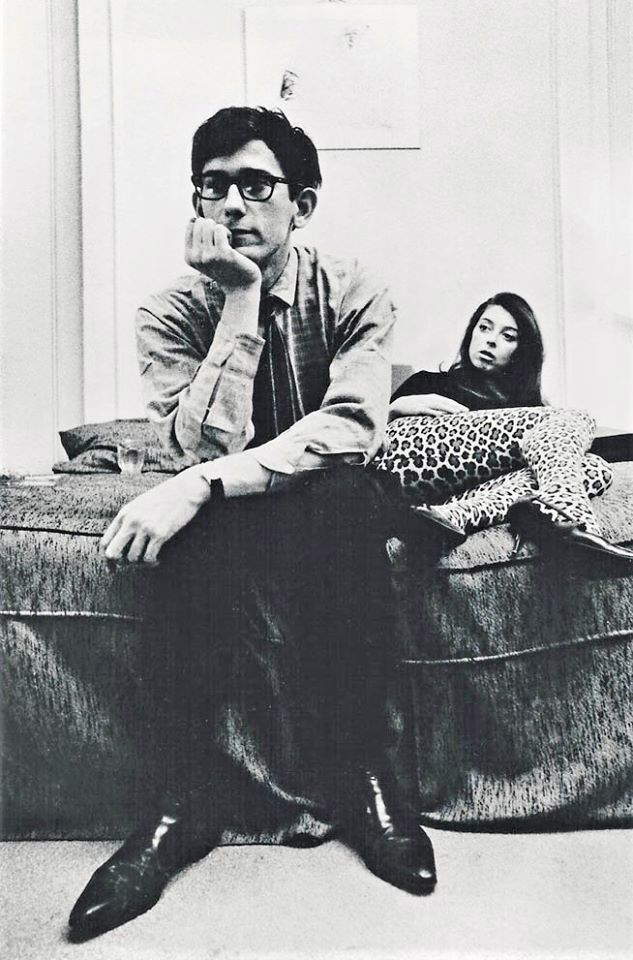
Christo Javašev was born in Gabrovo, Bulgaria, on June 13, 1935 (interestingly, the same day as his wife Jeanne-Claude Denat de Guillebon); his father Vladimir was an entrepreneur and his mother Cveta Dimitrova a secretary at the Academy of Fine Arts in Sofia, an institution that Christo himself attended until 1953. In 1956 he moved to Prague, a city from which he fled the following year while attempting to escape the Communist regime, and headed to Austria. Finally, he settled in Paris in 1958, beginning to collaborate with the Nouveau Réalisme group and working as a commission painter to earn a living. He met Jeanne-Claude Denat de Guillebon at that time when she contacted him about painting a portrait of her mother, Madame Denat de Guillebon. From the moment of their meeting, the two entered into great personal and artistic harmony and were never separated again. Jeanne-Claude was born in Casablanca, Morocco, to French major Léon Denat and Précilda Feichheimer. She moved to Paris in 1947: here, her mother married General Jacques de Guillebon, and the family later moved to Bern and then to Tunis. Jeanne-Claude, after graduating from high school in Tunis, returned to Paris in 1958, and there she met Christo.
The couple traveled extensively around the world to locate suitable places for their projects, and eventually chose New York City as their staple to return to after their missions. Theirs was a true artistic vocation that fully permeated their lives, for example, they imposed on themselves the same rule adapted by top management that is, never to take the same plane for long-distance routes so that in the event of an accident, one of them could continue their art.
In fact, Christo fulfilled the promise they had made to each other after Jeanne-Claude passed away on November 18, 2009, as a result of complications from a brain aneurysm, and continued to pursue the works that Jeanne-Claude would have liked to make. Christo went on with his art until he, too, died on May 31, 2020.
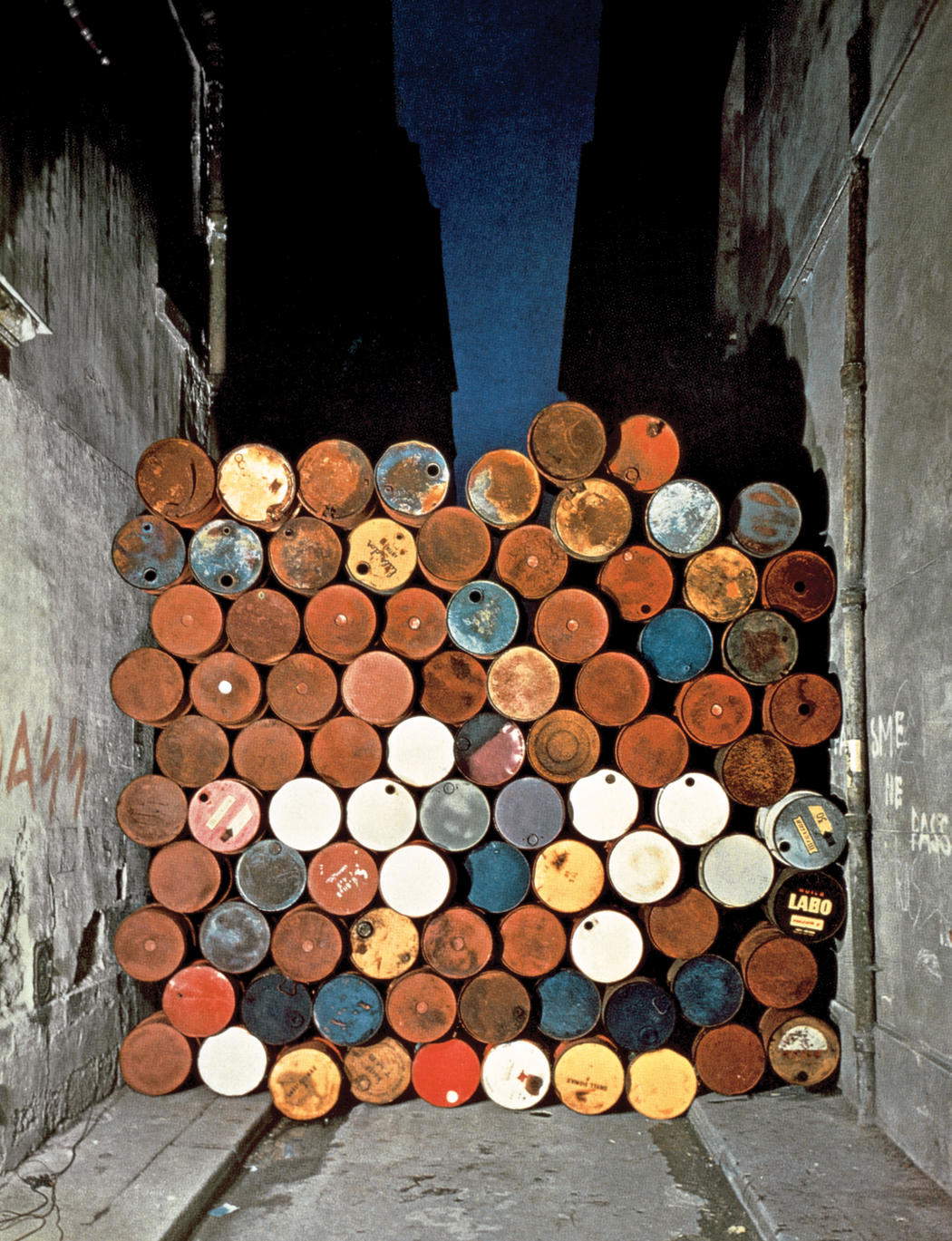
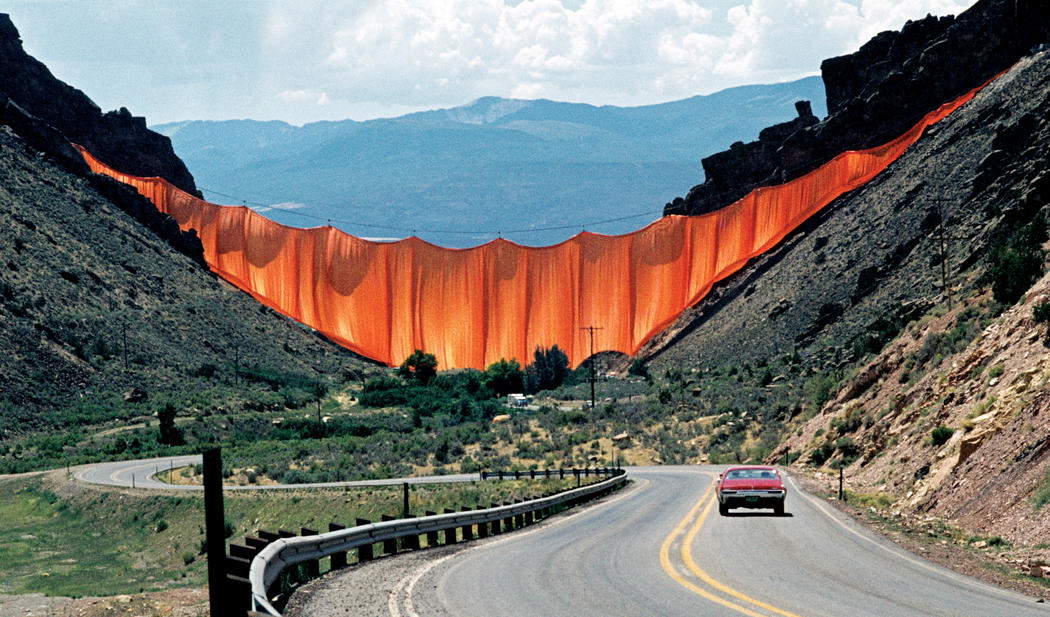
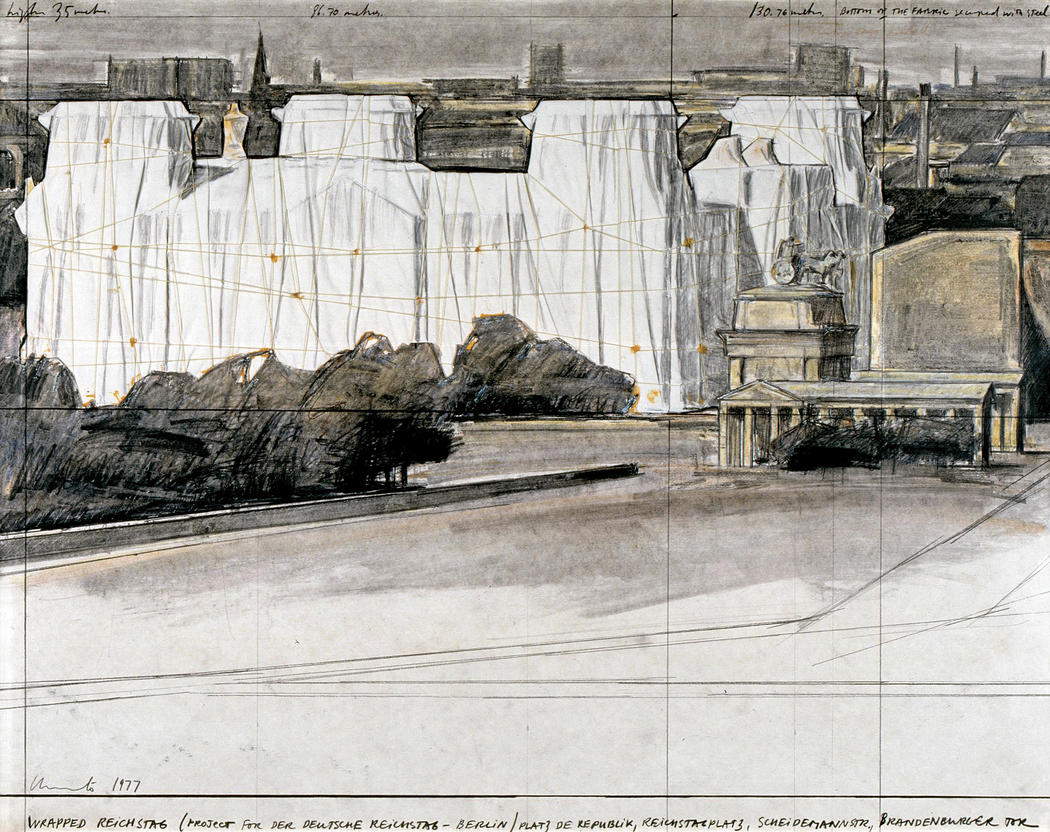
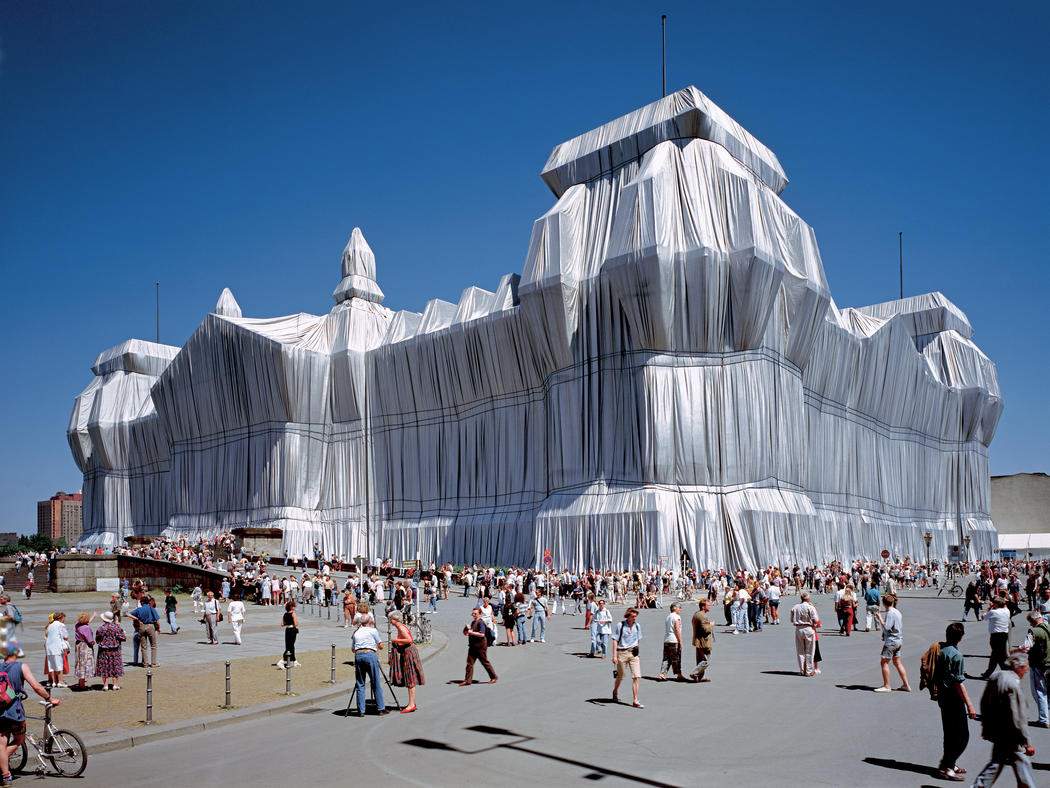
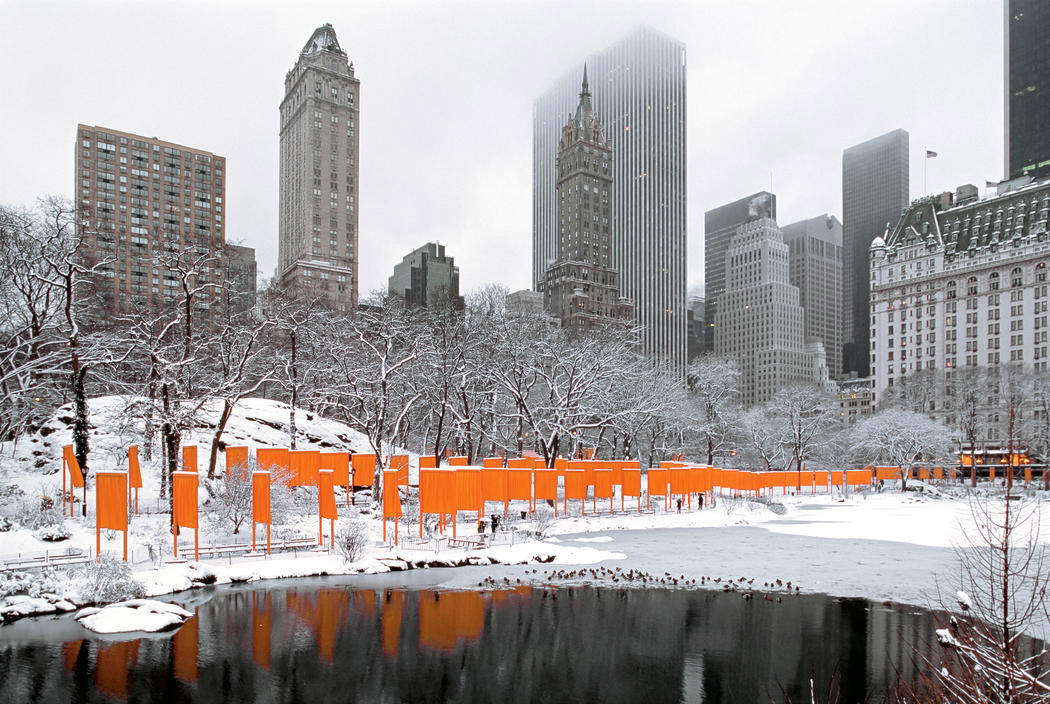
Christo, soon after meeting his wife, began planning with her to travel the world and leave a tangible mark of their art in a way that had never been done before. Thus, they decided to make projects that fit into the context of Land Art, which is based on the concept whereby the artist intervenes directly in specific places and landscapes, using the world as if it were his or her own canvas (read an in-depth look at ten masterpieces by Christo and Jeanne-Claude here). In the case of Christo and his wife, their interventions were temporary in nature and were a kind of crossroads between installation, performance, and street art: they would choose a particular place or building and cover it entirely with textiles, ropes, and other materials, altering its fruition for a period. Their artistic intent was to bring to life an action that would provoke a great impact on the public, causing them to be faced with altered or hidden elements of the landscape from one moment to the next. They chose to intervene in scenery that people are used to seeing every day often without giving it too much thought, triggering a sense of lack when they are suddenly deprived of it, without producing permanent effects but acting in an ephemeral and short-lived way. Once the work was disassembled, in fact, the landscape returned to its original appearance, as if the work had never been there, while the materials used were recycled.
The two saved everything they earned from the sale of preparatory drawings, collages and models of their projects in order to self-finance the creation of the works and remain as independent as possible, so a lot of time often passed between projects, in which they devoted themselves to recovering financial funds and physical energy.
Both Christo and his wife were involved in all phases of the project, in fact Christo focused on the more conceptual and design part, while Jeanne-Claude took care of the organizational and practical aspects. Among the tasks related to the more organizational part was also the request for direct confrontation both with the administrations, to which the two artists approached to obtain the necessary permits to act, but also with the inhabitants of the neighborhoods involved in the project, organizing meetings to find out their opinion about the planned intervention.
Their first installation, however, did not receive the approval of the inhabitants, yet Christo and his wife did not want to stop and tenaciously continued to pursue it. It was a project carried out in Paris in 1962, titled The Wall of Barrels, which Christo and Jeanne-Claude created by installing 89 metal barrels on Rue Visconti, one of the city’s narrowest streets. The work was to form a de facto barricade, not coincidentally also known as “The Iron Curtain,” and was intended to denounce the recent construction of the Berlin Wall. In fact, the work prevented people from passing through the street, going to highlight how the decision to erect the Berlin Wall was affecting an already quite compromised political situation, mostly by impacting the living habits of citizens, who could no longer reach different points in the city.
The episode of the Parisian inhabitants’ rejection of their installation led the two to want to dare more and more. In 1969, Christo went to Australia for his first “wrap-up” entitled Wrapped Coast, One Million Square Feet. With the help of fifteen professional climbers, Christo wrapped around a two-kilometer-long portion of Sydney’s rocky coastline as much as 93,000 square feet of a special erosion-resistant fabric, securing it with an equally long rope.
The “wrappings” of the following years were of different types, some smaller and some larger, but all always very impactful, for example the two during the Documenta 4 exhibition in Kassel in 1968 “packed air” (thus an empty cube inside) for 5,600 cubic meters and lifted the whole thing with a crane, making sure that the work could be seen up to 25 kilometers away. In Milan, however, during the so-called “Funerals of Nouveau Réalisme” in 1970, they packed both the equestrian statue of Victor Emmanuel II in Piazza Duomo and the monument dedicated to Leonardo da Vinci in the square in front of La Scala Theater.
In the 1970s, the two often worked in the United States, using brightly colored fabrics, most likely drawing on Pop Art. Sometimes their interventions in these territories were affected by adverse weather conditions, as happened with Valley Curtain (1972), made in Rifle, a town in Colorado. Once the installation of a colossal orange tent that divided the valley into a 380-meter-long partition had been completed, Christo was forced to have the entire installation dismantled the next day due to very strong gusts of wind.
It also became very famous, Running Fence (1972-1976) a large forty-kilometer-long fence placed between some steep slopes of the countryside north of San Francisco, made of large white nylon tarpaulins hanging from a steel cable supported by more than two thousand metal posts. With this work, Christo created a stark contrast between the verticality of the work and the horizontality of the landscape, as well as between nature and the man-made materials used. If one admired the work from above, it resembled the body of a snake winding its way through the valleys, and when the wind passed between the sheets it swelled them and made the fabric crackle, thus giving the impression of a snake coming alive. The project took four years to install, and then remained mounted fourteen days.
Also curious is the Surrounded Islands intervention (1980-1983), which involved islets in the Biscayne Bay area of Miami in the state of Florida, surrounded by a floating polypropylene fabric of an intense shocking pink color. The islets, viewed from the other side, thus appeared to be imprisoned in huge pieces of chewing gum. Finally, in New York City appeared in 2005 The Gates, a 30-kilometer pathway within the famous Central Park public gardens consisting of more than 7,500 5-meter-high arcades four meters apart, interspersed with orange-colored material.
Between the 1990s and the 2000s Christo created other works in Europe that were highly successful. In 1995 he carried out the project of wrapping the Reichstag (the German government building) in Berlin, enclosed by miles and miles of silver cloth, attracting millions of visitors.
In Italy he created a work that became very famous and perhaps for the first time facilitated passage instead of impeding it, it was Floating Piers (2016), a long floating walkway placed directly on Lake Iseo to join the towns of Sulzano and Monte Isola with the small island of San Paolo. People walking along the walkway, had the impression of literally walking on the water enveloped by a particular light given by the reflections of the water breaking on the intense yellow of the fabric. This was the first work created after the death of his wife, materializing a project they had conceived together back in the 1970s. Christo’s last work is dated to 2018, and was placed in London on the Serpentine lake in Hyde Park. It was titled The London Mastaba and consisted of a floating platform placed on the surface of the lake, on which was placed a trapezoid made up of 7,506 barrels colored blue, red, and mauve arranged horizontally, reminiscent of a pyramid. About this work, Christo stated that there was no specific message but that everyone could find their own meaning in it, and that he had mainly “Created a huge a staircase to the sky.”
Christo and Jeanne-Claude had one wish, which they failed to carry out in their lifetime, and that was to create the wrapping of the Arc de Triomphe in Paris, a monument that for them was a symbol of a city rich in history and art. However, the work was completed between September and October 2021 thanks to the initiative of their grandson Vladimir Javacheff, in collaboration with the Pompidou Museum and through the couple’s legacies and directions.


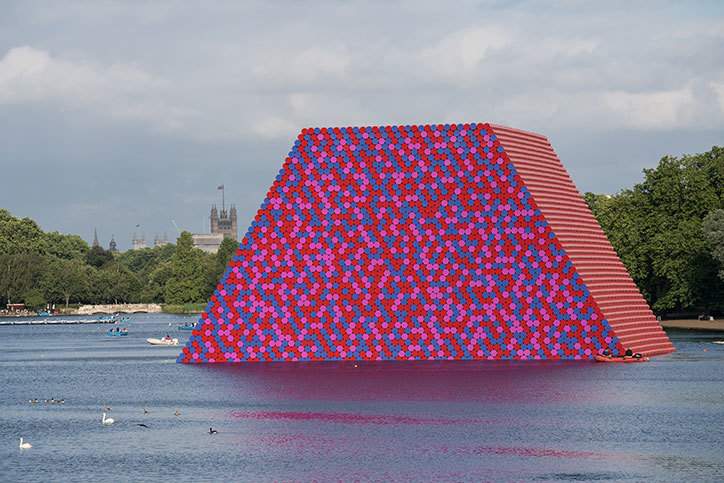
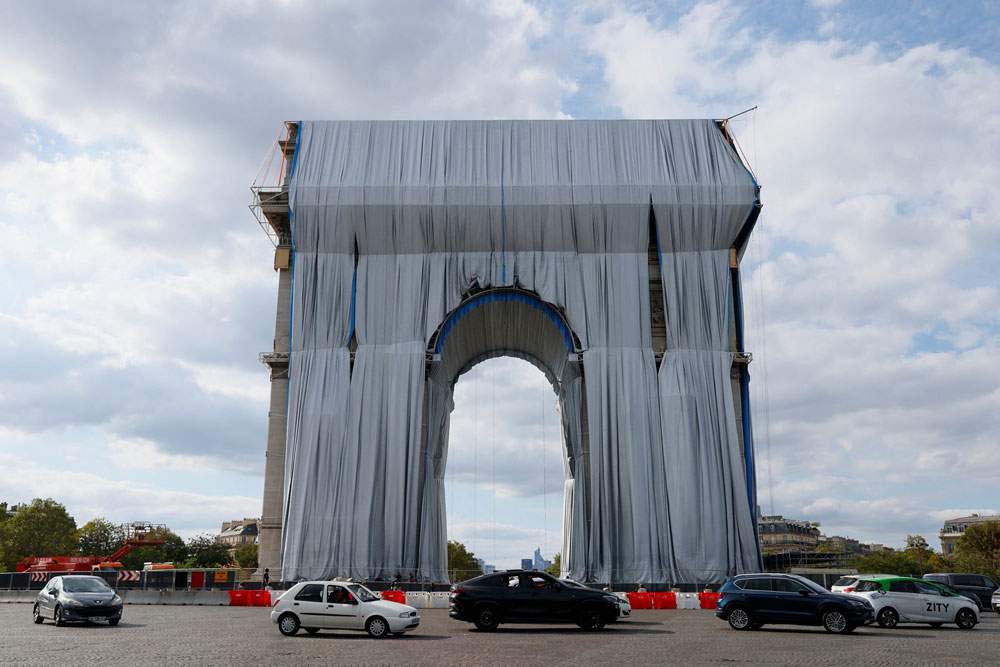
As mentioned, the works of Christo and his wife were temporary in nature. However, the two left traces of the installations they made by relying on photographer Wolfgang Volz and had documentaries made for at least five of their major works, directed by Albert and David Maysles.
Documentations of their work are often presented in exhibitions, such as the anthological exhibition that opened in 2018 at the Serpentine Gallery in London in conjunction with the installation of The London Mastaba, celebrating 60 years of their work.
In Italy, in addition to the famous Floating Piers installation, there have been several exhibitions dedicated to Christo and Jeanne-Claude, including Water projects dedicated precisely to their water-related works set up at the Museo di Santa Giulia in Brescia from April to September 2016 and a traveling exhibition entitled Christo - beyond the surface that touched down in Parma, Brescia and Padua between 2018 and 2019.
 |
| Christo and Jeanne-Claude. Life and Works of the Land Art Duo. |
Warning: the translation into English of the original Italian article was created using automatic tools. We undertake to review all articles, but we do not guarantee the total absence of inaccuracies in the translation due to the program. You can find the original by clicking on the ITA button. If you find any mistake,please contact us.